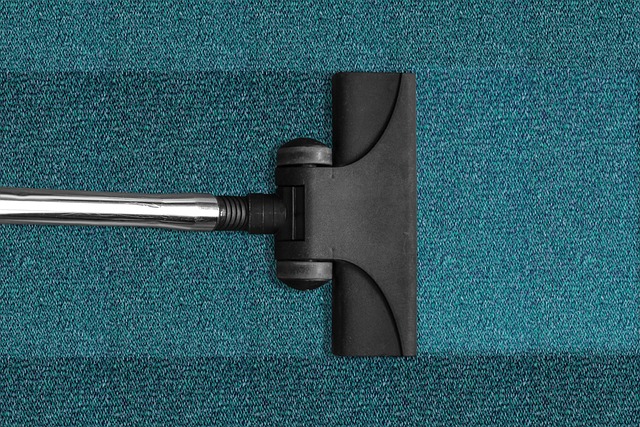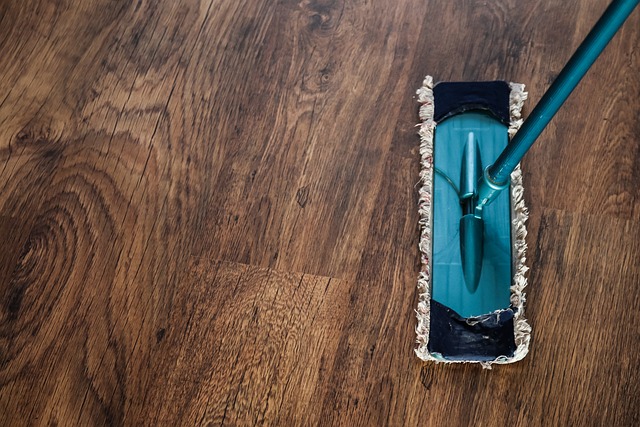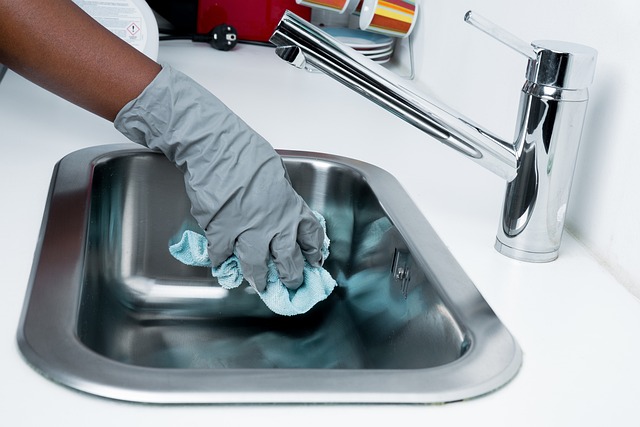Deep cleaning rugs requires understanding fiber types for tailored treatment, meticulous preparation, vacuuming as a pre-step, stain pre-treatment with suitable solutions, using professional-grade detergents, steaming for sanitization and odor removal, proper post-cleaning drying techniques, and regular maintenance through daily vacuuming, doormats, spill blotting, and rotation to extend lifespan.
Looking to breathe new life into your rugs? Deep cleaning is essential for maintaining their beauty and longevity. This comprehensive guide takes you through every step, from understanding rug fiber types to choosing the right detergents and mastering drying techniques. Learn how vacuuming, pre-treating stains, and steaming can deliver optimal results, while our maintenance tips ensure your rugs stay pristine between deep cleaning sessions. Discover the secrets to effective deep cleaning today!
Understanding Rug Fiber Types and Their Cleaning Needs

Rugs come in a wide variety of fiber types, each with its own unique characteristics and cleaning requirements. Understanding these differences is key to effective deep cleaning. For instance, natural fibers like wool and silk require gentle handling due to their delicate nature, while synthetic fibers such as nylon or polyester can withstand more intense cleaning methods.
When it comes to deep cleaning, knowing the fiber type helps in selecting the right techniques and solutions. Different fibers may need specific treatments, such as hot water extraction for nylon or spot cleaning with specialized solvents for silk. By tailoring your cleaning approach to match the rug’s fiber type, you ensure optimal results while preserving the rug’s integrity and extending its lifespan.
Preparing Your Space for an In-Depth Cleansing Process

Before beginning any deep cleaning process, preparation is key. Clear the rug area by removing all furniture and obstacles to ensure easy access and movement around the rug. Vacuum thoroughly to eliminate dust, dirt, and debris that might interfere with the cleansing process or leave behind residue. Empty and clean any nearby waste baskets to maintain a tidy workspace.
Additionally, gather all necessary cleaning supplies in advance, including a suitable detergent or cleaning solution, a vacuum cleaner, a rug shampooer (if needed), and microfiber cloths. Organize these materials within reach to streamline the deep cleaning process and ensure efficiency when tackling each step of the cleansing journey.
Vacuuming: The First Step in Deep Rug Cleaning

Vacuuming is an essential pre-step in any deep cleaning routine for rugs, serving as a crucial first layer of protection and purification. It effectively removes surface debris, including dust, dirt, pet hair, and even crumbs, which can accumulate over time and contribute to the wear and tear of your rug’s fibres. By taking this initial step, you prevent these small particles from embedding deeper into the fabric, making subsequent cleaning efforts more efficient.
Moreover, regular vacuuming helps extend the life of your rug by preventing the build-up of allergens and bacteria. It creates a healthier environment for both your family and your rug, ensuring that when you do delve into a deep cleaning process, the results will be optimal.
Pre-Treating Stains for Optimal Results

Before diving into the deep cleaning process, pre-treating stains is a crucial step for achieving optimal results. This initial preparation involves identifying and addressing specific spots as soon as possible to prevent them from setting into the rug’s fibers. Different stain types require unique treatments—be it a paste, liquid, or dry powder—to effectively loosen and lift dirt, oils, and other debris.
For best outcomes, test any pre-treating solution on a small, inconspicuous area of the rug first to ensure colorfastness. Once you’ve determined the appropriate approach, apply the treatment directly to the stain, gently rubbing it in to ensure even coverage. Allow the pre-treatment to sit for several minutes, then blot dry with a clean cloth or sponge to avoid excessive moisture penetration, which can cause the stain to spread further.
Choosing the Right Detergents and Solutions

When it comes to deep cleaning rugs, selecting the right detergents and solutions is paramount. Opt for products specifically designed for rug care, as they are formulated to effectively remove dirt and stains without damaging the fibres. Avoid using harsh chemicals or home remedies that could leave residue or weaken the fabric. Professional-grade rug cleaners offer a gentle yet thorough approach, ensuring your rugs not only look their best but also maintain their quality over time.
Consider the type of rug material – wool, synthetic blends, or natural fibres – as this guides choice. Different fabrics require distinct care. For instance, wool and natural fibres benefit from mild, pH-neutral cleaners to prevent colour fading, while synthetic blends might tolerate stronger solutions. Always test a small, inconspicuous area first to verify compatibility and minimise the risk of discolouration.
The Art of Steaming: A Powerful Method for Sanitation

Deep cleaning rugs involves more than just a quick vacuum. For truly thorough sanitization, consider adopting the art of steaming. This powerful method uses hot water and steam to loosen dirt and grime embedded deep within the fibers. The high temperature kills bacteria, mites, and other allergens, leaving your rug not only clean but also hygienic.
Compared to traditional cleaning methods, steaming offers several advantages. It’s effective on various rug types and can be done with minimal preparation. Steaming also reduces the need for harsh chemicals, making it a safer option for homes with children or pets. The result is a deeper clean that refreshes the look and feel of your rugs while eliminating odors and enhancing their lifespan.
Drying Techniques to Prevent Damage or Warping

After deep cleaning your rugs, proper drying techniques are essential to prevent damage or warping. It’s crucial to avoid over-drying by allowing ample time for the rug to air dry naturally. Spread the rug out in a well-ventilated area, ensuring it has enough space to dry evenly. Avoid direct sunlight as it can cause fading and further damage.
Using fans or opening windows can help speed up the process while maintaining optimal conditions. Never rush the drying process by using excessive heat, as this can shrink or distort the fibers, especially in delicate fabrics. Patience is key; a properly dried rug will maintain its quality and color for longer, ensuring your deep cleaning efforts pay off.
Maintenance Tips for Longevity: Keeping Your Rugs Clean Between Deep Cleaning Sessions

Regular maintenance between deep cleaning sessions is vital for prolonging the life of your rugs. Daily vacuuming is a must to remove loose dirt, dust, and debris that can accumulate and lead to wear and tear. Aim for at least once a week, or more if you have high-traffic areas, to ensure optimal rug health.
In addition to vacuuming, use mats at entrances to trap dirt and moisture from shoes before it has a chance to sink in. Blot any spills immediately with a clean cloth or paper towel; avoid rubbing, as this can spread the stain. Rotating your rugs every few months can also help, especially for those placed in direct sunlight, as it reduces color fading and uneven wear patterns.
